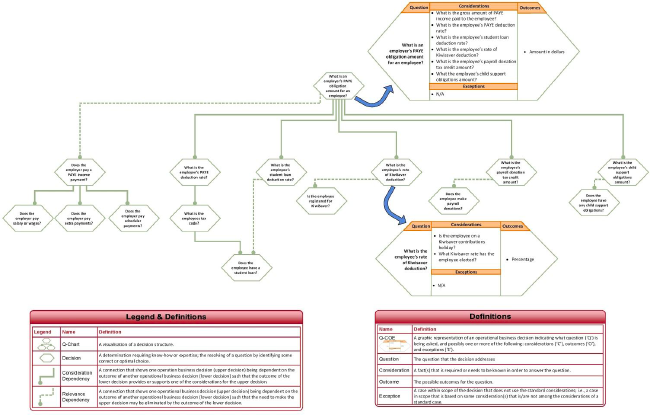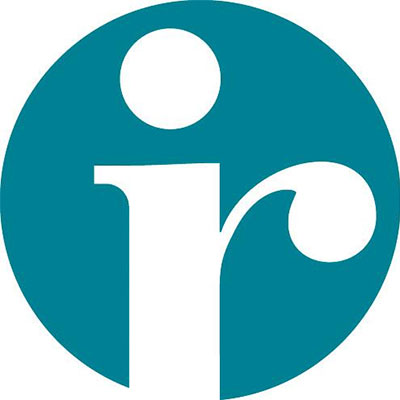Eliciting Business Rules from Legislation and Policy for Business Use
The Business Rules Centre (BRC) was established at Inland Revenue (IR) to enable IR and its customers to make consistently accurate decisions that are compliant with legislation and policies.
Why we do what we do
Any system is only as good as the information that goes into it. Decisions can be inconsistent or inaccurate, not because they cannot be made accurately, but because the information needed to do so is unstructured and dispersed. Here at the BRC we employ some standardised Business Techniques/Methods that allow us to be able to structure information in a consistent format. It helps us to bring together legislation and the business's interpretation of it (business knowledge) in the form of rule statements that present the law in a logical way making them easier and quicker to apply.

The approach
A business rule is a statement that defines or constrains some aspect of business:
- Definition rules — classify or compute something using known facts.
- Constraining rules — a business rule whose purpose is to shape (govern) day-to-day business activity and prevent undesirable situations that could occur at any point in time. It is a rule that can be violated directly because there is an obligation concerning conduct, action, practice, or procedure.
So when structuring the information we capture the 'what', 'how', 'where', 'who', and 'when' of doing business into these simple logical rule statements.
To arrive at these business rules, the first thing we do is to understand the Business Architecture for the area of business in question. To help us do this we develop a concept model which shows the key concepts at play and the relationships between them. This is a thinking tool that helps us capture the current state of the business strategy, policy settings, etc. in effect and provides a basis for envisioning the opportunities available for future states.

Figure 1. Example of a Concept Model.

Then we create a structured business vocabulary in line with the concept model. The definitions are agreed to upfront so everyone is on the same page from square one. Using this structured business vocabulary mitigates the risk of misinterpretation of rules later on. We then use these terms, and their definitions, throughout our analysis.
Next is decision modelling. Every operational business decision will have business rules guiding it. We align these rules with the decision so that consistent logical decision making is possible. The artefacts we produce are:
- Question charts — these are visualisations of decision structures, showing the questions that need to be answered and also any dependencies between each question.
- Q-COEs — these add the next level of detail for each Question in the decision structure. They state the facts (Considerations) that need to be obtained to arrive at an optimal answer (Outcomes) for the question and identify any Exceptions that may apply for the given question.

Figure 2. Example of a Decision Model.

Once we have a list of agreed terms and understanding of how the given area of the business operates, we are then ready to form business rule statements. These statements reduce ambiguity and are presented in structured English that is readily understood by the business.
As the logic contained in the rules is used to structure the decisions, accurate decisions are made and, wherever reused, the application of the decision will be consistent. This is how we achieve consistently accurate decisions.
We arrive at this outcome by understanding the business language and knowledge in order to structure this logic into practicable business rules.
We maintain the artefacts (models and rules) produced with a proper source of traceability, legal/business sign-off, and other relevant metadata. We use them as living knowledge assets that we reference and reuse as starting points for future changes.
Lessons learned
- The business rules approach brings together and retains understanding of how legislation and policies work. Once this is done and there is access to this knowledge then it improves the consistency of technical decision making.
- The business rules also allow the staff of the business to apply legislation more efficiently as some of the interpretation is already done.
To apply the approach there needs to be:
- An appetite for learning
- A culture of trying new things to overcome the challenges
Common or core capabilities identified
- The BRC has a cross-disciplinary team, ranging from lawyers, accountants, business analysts, business designers, and customer representatives. The key thing we've focused on in building the team is having people with very strong analytical capabilities.
- Standards and Frameworks:
- Agile working methodology:
- Working in Sprints, having daily stand ups and retrospectives at end of sprints
- Team involvement in the whole end-to-end process
- Team owning the delivery as a team, not individuals
- Team feeling empowered to make changes and challenge current states
- Team having constant opportunities for continuous improvement
- Team thinking of how we can deliver value to the organisation better
- Team making decisions on their work
- Focus on providing quality output that is relevant to the specific customer
- Digital awareness
- Digital workflow management to overcome challenge of not being co-located
References
[1] Business Rules Analysis Framework at https://drive.google.com/file/d/1mtwxLPvtWTAdXd-HXEuR9PzKg-RvkCxG/view![]()
[2] Decision Analysis Framework at https://drive.google.com/file/d/1j-e-XpYkU_3gUgIEV0pCJqObe8Smy210/view ![]()
# # #
About our Contributor:
Online Interactive Training Series
In response to a great many requests, Business Rule Solutions now offers at-a-distance learning options. No travel, no backlogs, no hassles. Same great instructors, but with schedules, content and pricing designed to meet the special needs of busy professionals.











